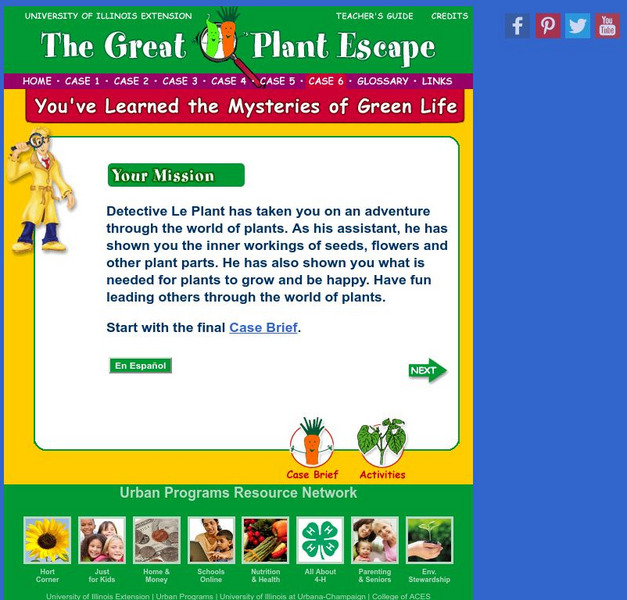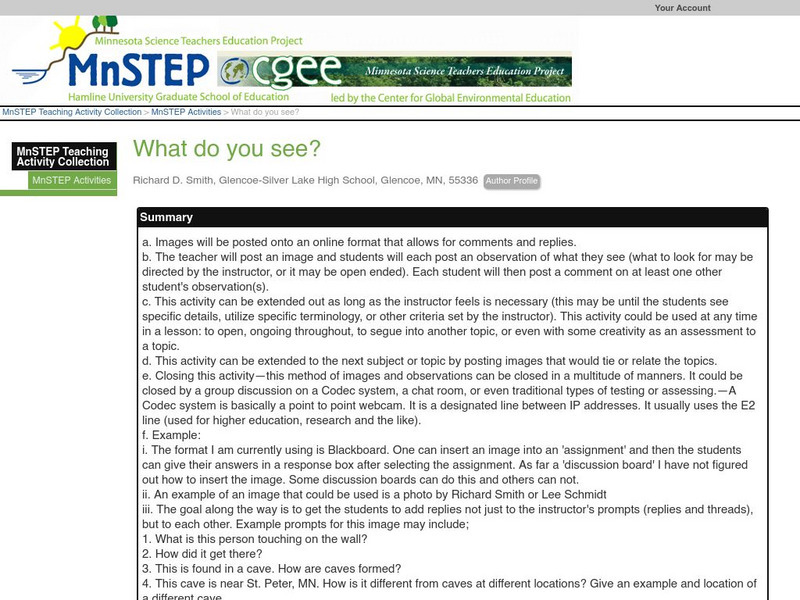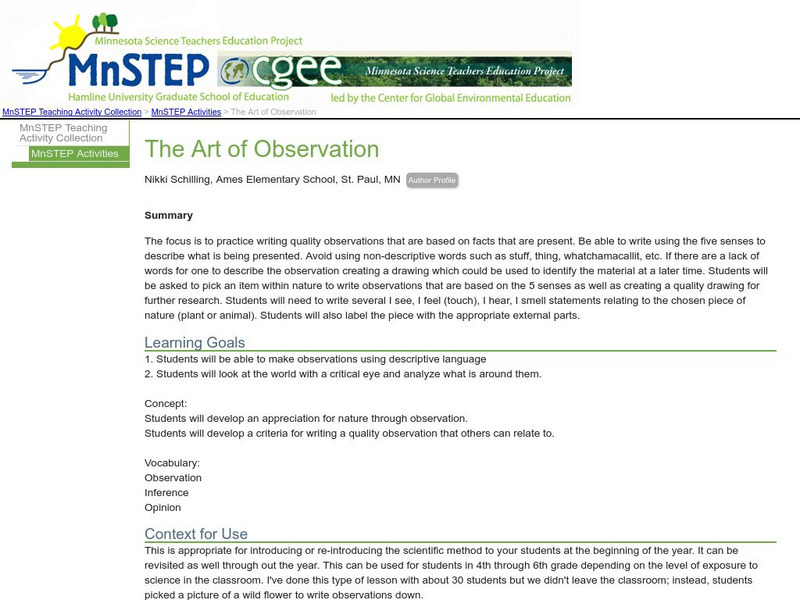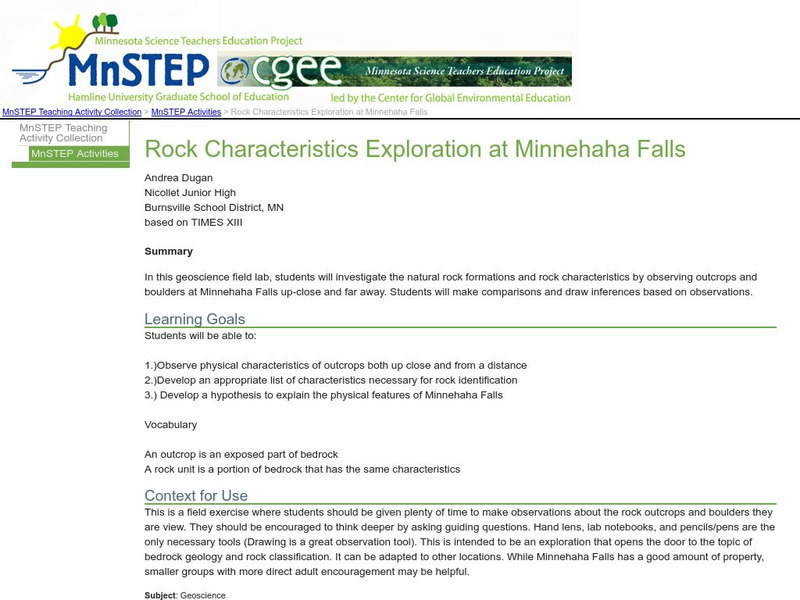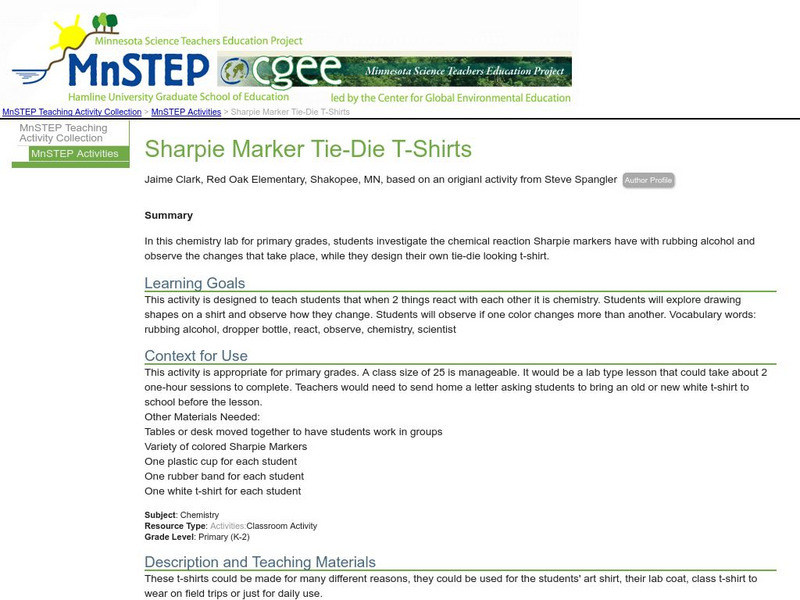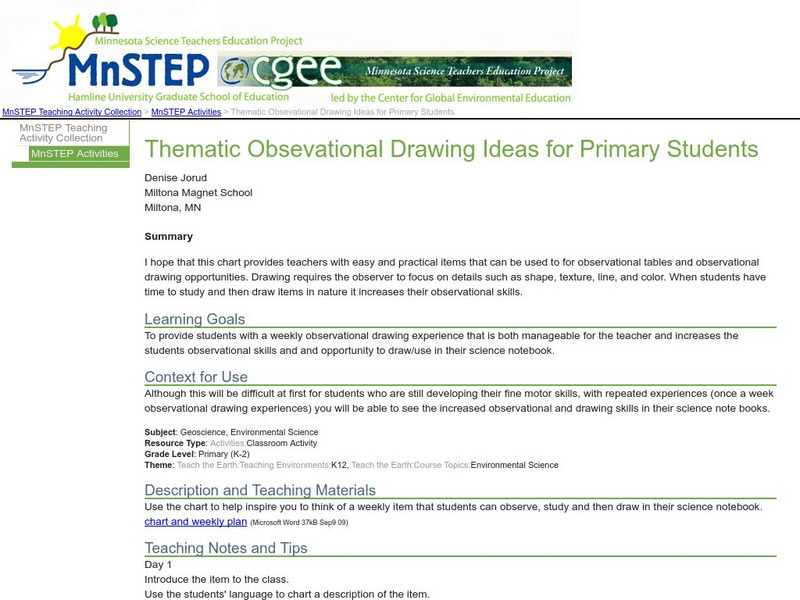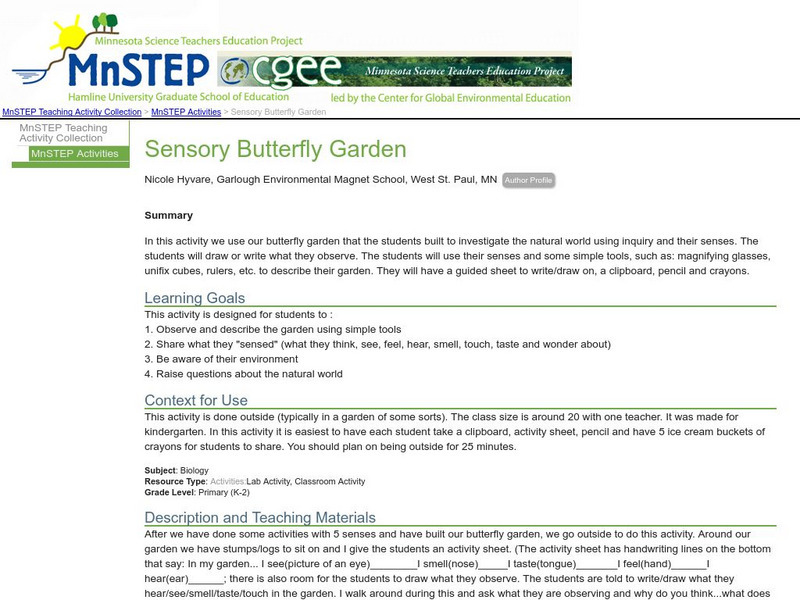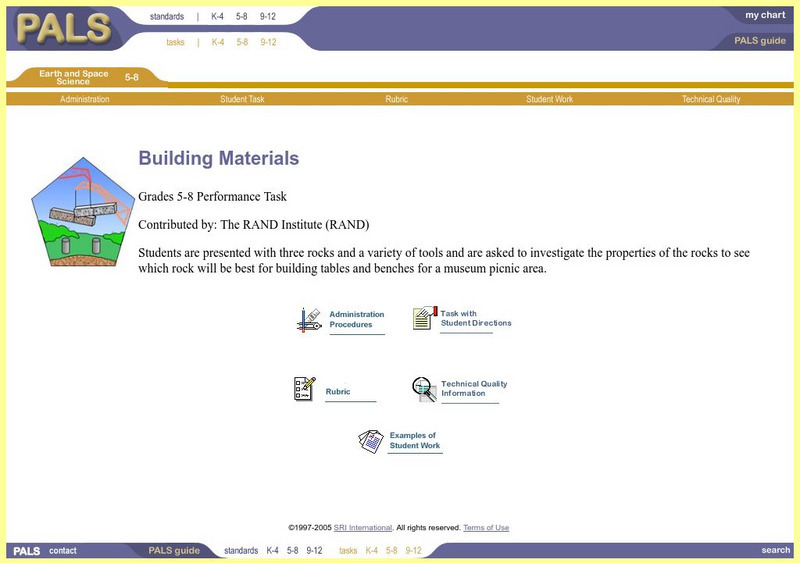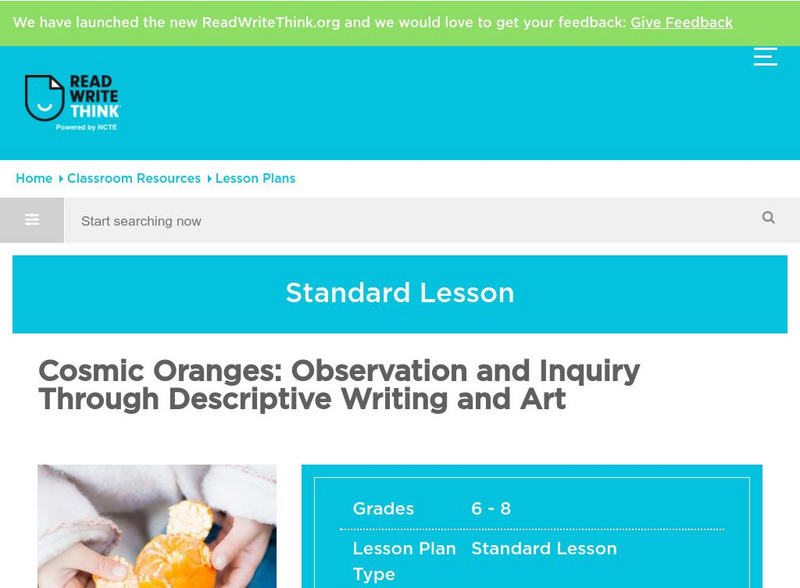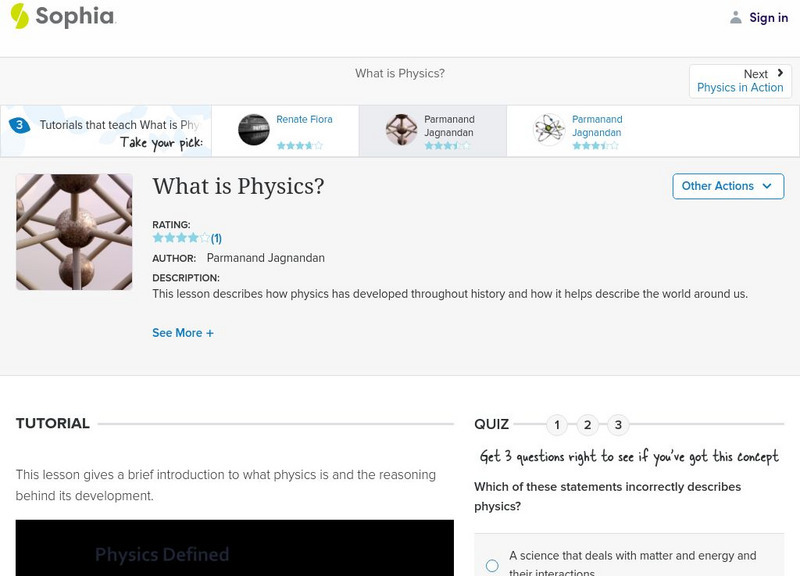Alabama Learning Exchange
Alex: Making Tracks
This lesson plan will allow students to explain or interpret possible scenarios from a single set of observations. Emphasis should be on supporting interpretations with concrete observations.
ABCya
Ab Cya: Christmas Present Hunt
Christmas Present Hunt is fun holiday activity for kids of all ages. The object of this Christmas activity is to simply find the hidden presents. Look carefully at the pictures and click/tap on the gelt to collect them. These Christmas...
Science Fun for Everyone
Science Fun: Gorgeous Gooey Gobstoppers
Watch the masterpiece you create when you dissolve 10 gobstoppers in a bowl of water. Video explanation included.
University of Illinois
University of Illinois Extension: The Great Plant Escape
Detective Le Plant has taken you on an adventure through the world of plants. As his assistant, he has shown you the inner workings of seeds, flowers, and other plant parts. He has also shown you what is needed for plants to grow and be...
PBS
Pbs Learning Media: Evidence of Weather
Observe and annotate various images of weather phenomena in this interactive drawing tool produced by WGBH. Weather is the combination of various factors -- snow or rain, wind, sunlight and clouds, and temperature -- that happen in a...
Louisiana Department of Education
Louisiana Doe: Louisiana Believes: English Language Arts: Grade 5: The Making of a Scientist
Fifth graders learn about the steps of scientific investigation. Students explore how various theories have changed over time by gaining knowledge through scientific investigation. They will begin to use evidence and read about peoples'...
Environmental Education for Kids
Eek!: Teacher Resources: Milkweed Check Up
In this lesson, learners will locate and identify milkweed, identify signs of ozone plant damage, and determine the severity of ozone damage to individual plants and plant communities. They might also collect injured leaf samples for a...
McREL International
Mc Rel: Whelmer #11 Learning Activity: Straw Oboes
An easy to do activity that investigates sound waves, wave length, frequency and pitch. The activity is presented in a lesson plan format that meets NSES standards.
McREL International
Mc Rel: Whelmer #67 Activity: Bells in Your Ears
An easy to do, fun activity that investigates sound waves. The activity is presented in lesson plan format that meets NSES standards.
McREL International
Mc Rel: Whelmer #64 Learning Activity: Liquid Rainbow
An easy to do activity that investigates density and solubility. The activity is presented in lesson plan format that meets NSES standards.
Science Education Resource Center at Carleton College
Serc: Mn Step: What So You See?
Students practice developing their observational skills in this activity where they examine images related to the topic being studied in science. They record their observations, comment on each other's ideas, and ask investigable questions.
Science Education Resource Center at Carleton College
Serc: Mn Step: Terrarium Investigating the Water Cycle in a 1 or 2 Liter Bottle
For this activity, students construct a terrarium in a bottle, and observe it over time to see when it 'rains,' which will indicate the completion of a water cycle.
Science Education Resource Center at Carleton College
Serc: Mn Step: The Art of Observation
A lesson in how to write accurate, critical observations that involve using the five senses and unambiguous language.
Science Education Resource Center at Carleton College
Serc: Mn Step: Rock Characteristics Exploration at Minnehaha Falls
An outdoor activity where students visit a local area, in this case a falls, and record observations that describe the rocky outcrops and boulders that are there. A good exercise in scientific observation.
Science Education Resource Center at Carleton College
Serc: Mn Step: Sharpie Marker Tie Die T Shirts
This is an exercise in scientific observation. While students are creating a tie-die design on a t-shirt, they will observe the chemical reaction taking place between the rubbing alcohol and the permanent markers, and which color spread...
Science Education Resource Center at Carleton College
Serc: Thematic Obsevational Drawing Ideas for Primary Students
A simple chart which provides teachers with easy and practical items that can be used to for observational drawing opportunities.
Science Education Resource Center at Carleton College
Serc: Mn Step: Sensory Butterfly Garden
This activity requires a small butterfly garden. In this case, the class had created one. Student explore the garden and record scientific observations made using their senses.
SRI International
Performance Assessment Links in Science: Building Materials
This lab incorporates observational skills to solve the problem of finding the best rock to build tables for a museum picnic area. Students are called on to observe the properties of the rock samples and then required to apply what they...
PBS
Pbs Kids: Plum Landing: Clouds or Shadows
This interactive is based on the PBS Kids' series, Plum Landing. Students will read informational text about clouds and shadows. Then they will make observations about them and draw these on the site.
ReadWriteThink
Read Write Think: Cosmic Oranges
Contains plans for four 45-minute lessons that ask young scholars to use their senses and focus their attention while writing descriptively and observing scientifically. In addition to objectives and standards, this instructional plan...
The Franklin Institute
Franklin Institute Online: Working Wing
This lesson plan provides a brief demonstration of how airplane wings lift a heavy airplane into the air. This activity would be an excellent example of how science and technology have positively impacted our lives. Prediction and...
Sophia Learning
Sophia: Qualitative and Quantitative Observations: Lesson 4
This lesson will explain the difference between qualitative and quantitative data. It is 4 of 4 in the series titled "Qualitative and Quantitative Observations."
Sophia Learning
Sophia: What Is Physics?: Lesson 3
This lesson describes how physics has developed throughout history and how it helps describe the world around us. It is 3 of 6 in the series titled "What is Physics?"
Sophia Learning
Sophia: What Is Physics?: Lesson 6
This lesson describes how physics has developed throughout history and how it helps describe the world around us. It is 6 of 6 in the series titled "What is Physics?"




